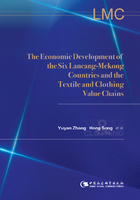
4.The future of the textile and clothing industry in the LM region
There is a pattern in the evolution of the internal structure of the textile and clothing industry. Economic growth will result in a gradual increase in the cost of production factors such as labour and land, and the continuous decline of production and exports of raw materials. For the production of yarns, fibres and other products in the textile sector, a country with capital and technology advantages and a labour shortage may leverage its capital and technology to make up for the labour shortage. Developed countries may opt to improve the textile quality by developing high-tech functional and intelligent textiles, so that their textile sector maintains a world leading position. Thus, as long as the economy is developing, the share of textile sector exports should maintain a growth momentum. When developing the textile and clothing value chains in the LM region, each country should follow the rules of evolution for the internal structure of the industry and take into consideration its own stage of development and factor endowments, among others, to ensure the identification of focused areas for future development, without seeking an unrealistic speed or scope of development. China may focus on the production of high-tech textiles. Thailand may consider developing high value-added technology-intensive clothing. Vietnam could attempt to shift its clothing industry, which is currently labour-intensive, to one that is technology-intensive with high added value. Myanmar and Cambodia may continue to focus on developing labour-intensive clothing manufacturing and the raw materials sector. Laos may prioritise the development of the raw materials sector in the textile and clothing industry.